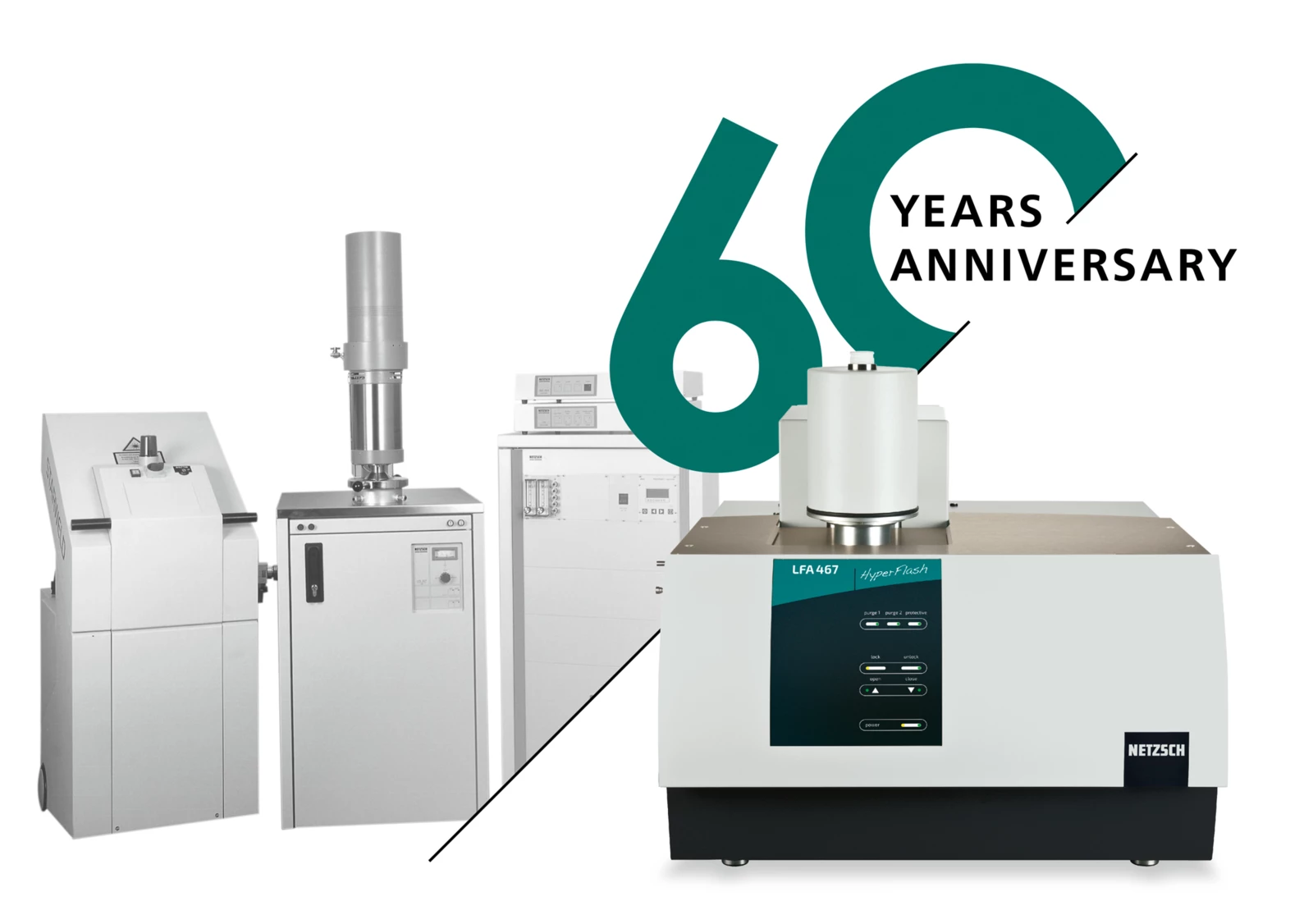
07.09.2022 by Aileen Sammler
60 Years of NETZSCH-Gerätebau: The History of the Laser Flash Apparatus
Since the beginning of the year, we at NETZSCH-Gerätebau GmbH have been celebrating our 60-year company anniversary. Within the framework of this anniversary year, we have been presenting a different one of our analytical instruments every month and highlighting its development across the decades. We will be dedicating the month of September to the Laser/Light Flash Analyzers, known as LFAs for short.
Thermal conductivity and diffusivity are among the most important thermophysical material parameters for describing the heat transport properties of a material or component. For the precise measurement of the Thermal DiffusivityThermal diffusivity (a with the unit mm2/s) is a material-specific property for characterizing unsteady heat conduction. This value describes how quickly a material reacts to a change in temperature.thermal diffusivity, the Laser/Light Flash Apparatur (LFA) has differentiated itself through multifaceted, precise technology: The front side of a thin, disc-shaped sample is heated with a brief laser or light pulse. With an infrared detector, the temporal course of the resulting temperature increase on the rear surface of the sample is measured. From this course, the Thermal DiffusivityThermal diffusivity (a with the unit mm2/s) is a material-specific property for characterizing unsteady heat conduction. This value describes how quickly a material reacts to a change in temperature.thermal diffusivity can be determined.
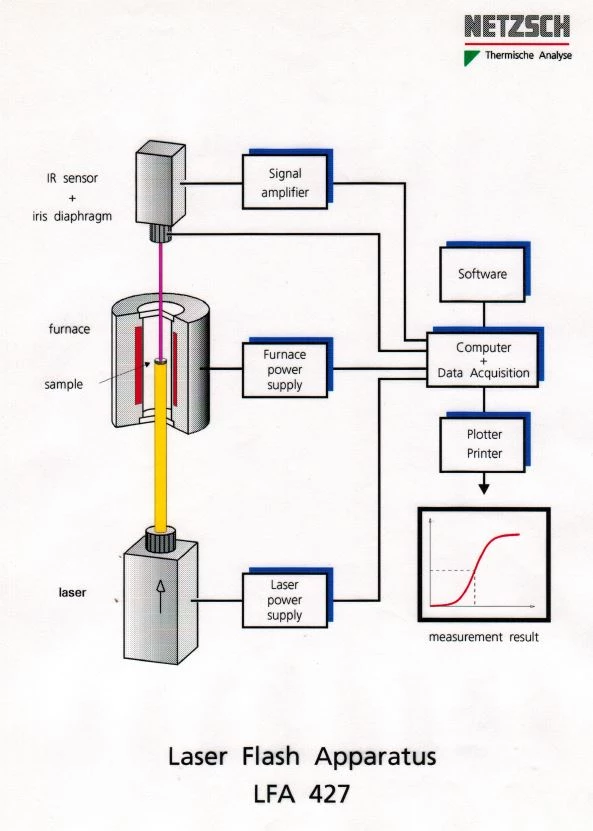
The laser or light flash method dates back to studies by Parker et al. in the year 1961. Their quote at the time brings the advantages of this method to light: “The elegance of the method lies in the effect that a measurement of thermal parameters which is normally tedious – such as absolute temperature and/or heat quantity – is replaced by a more precise, direct and quick measurement of time and of the relative temperature increase.” [Parker et al (1961)]
Collaboration agreement with the Karlsruhe Nuclear Research Center
Measurement of the Thermal DiffusivityThermal diffusivity (a with the unit mm2/s) is a material-specific property for characterizing unsteady heat conduction. This value describes how quickly a material reacts to a change in temperature.thermal diffusivity as a function of temperature was becoming increasingly important already in the 1980s. If one knows the Thermal DiffusivityThermal diffusivity (a with the unit mm2/s) is a material-specific property for characterizing unsteady heat conduction. This value describes how quickly a material reacts to a change in temperature.thermal diffusivity of a material or component, one can calculate the Thermal ConductivityThermal conductivity (λ with the unit W/(m•K)) describes the transport of energy – in the form of heat – through a body of mass as the result of a temperature gradient (see fig. 1). According to the second law of thermodynamics, heat always flows in the direction of the lower temperature.thermal conductivity, provided the thickness and the specific heat are known. This determination of the Thermal ConductivityThermal conductivity (λ with the unit W/(m•K)) describes the transport of energy – in the form of heat – through a body of mass as the result of a temperature gradient (see fig. 1). According to the second law of thermodynamics, heat always flows in the direction of the lower temperature.thermal conductivity, above all as a function of temperature, was important because it was what first allowed for calculating the dimensioning of constructional systems for computers, reaction chambers in chemical production, aircraft motors, driving mechanisms, etc. For metal-casting technology as well, Thermal ConductivityThermal conductivity (λ with the unit W/(m•K)) describes the transport of energy – in the form of heat – through a body of mass as the result of a temperature gradient (see fig. 1). According to the second law of thermodynamics, heat always flows in the direction of the lower temperature.thermal conductivity continues to play an important role.
All existing instruments were open systems at the time; i.e., the laser stand frei. The system was horizontally arranged, so samples needed to be inserted vertically. Protective spaces and laser glasses were thus essential.
The first closed system comes onto the market
So this is how it came about that, in October 1989, a collaboration agreement was signed between the “Technology Transfer” Coordination Department of the Karlsruhe Nuclear Research Center, LLC and NETZSCH-Gerätebau, to develop a new apparatus for determining Thermal DiffusivityThermal diffusivity (a with the unit mm2/s) is a material-specific property for characterizing unsteady heat conduction. This value describes how quickly a material reacts to a change in temperature.thermal diffusivity – known as a Laser Flash Apparatus – together. The Institute for Material Research at the Nuclear Research Center possessed the know-how with regard to this measurement technology, and in particular also in the area of sensors and lasers; NETZSCH-Gerätebau had the necessary capacities in terms of precision engineering, the technology for regulation, control and measurement, and furnace construction.
This bundled knowledge plus 30 years of experience resulted in the first closed Laser Flash Apparatus, the LFA 427, which was released onto the market after a brief three-year development time, in the year 1992.
It covered a temperature range from 20°C to 2000°C.
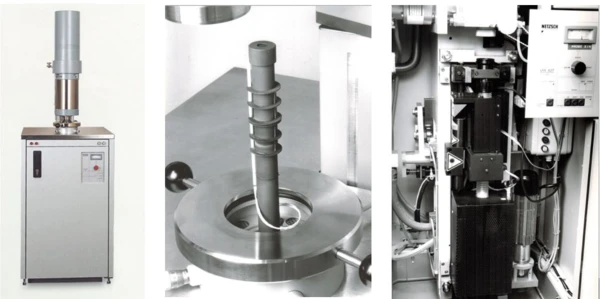
The entire instrument consisted primarily of a sample holder, a furnace system with an internal chamber that could be evacuated, a laser that operated in pulse mode, a temperature sensor system and the corresponding electronics for regulation, power supply and data recording. A PC – fast for its time – processed the data and provided a helpful graphic depiction. The LFA 427 was a brilliant new development that first came to the world market as a fully closed system and still is very successful today.
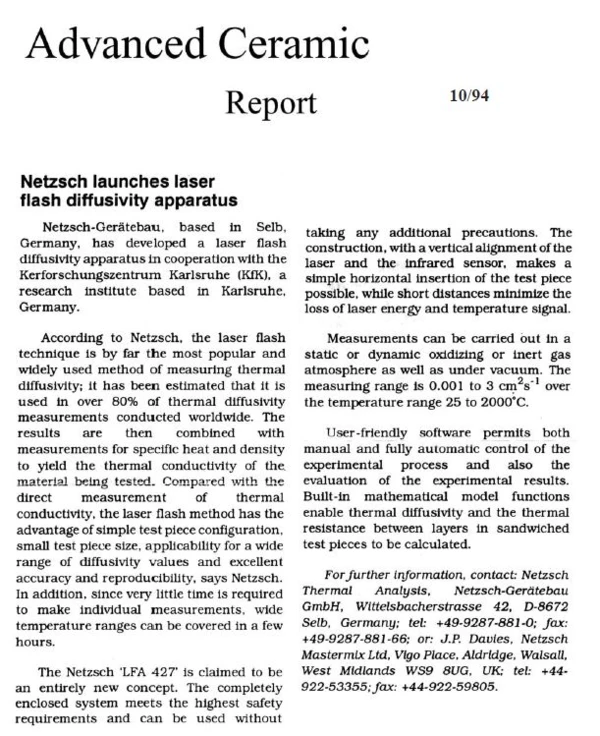
From then on, it was possible to set up apparatuses in the laboratory without any need for protective measures against laser light. Even the sample arrangement was considerably simplified: Since the laser was now arranged vertically, the sample could simply be laid on, which also meant less heat loss to the mount.
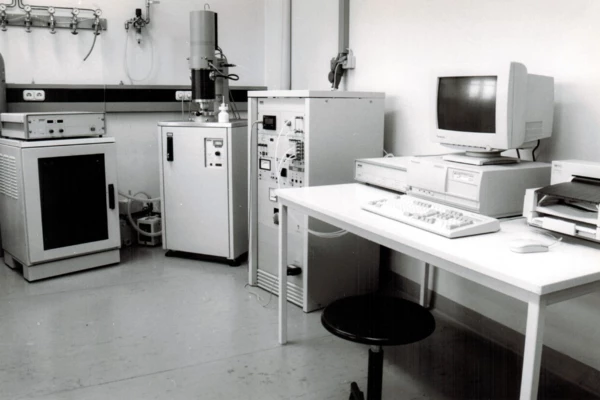
Ludwig Hagemann, today 85 years young, recently went out of his way to activate an old DELL laptop with Windows ME 2000 and a floppy disk drive, and installed Harvard Graphics 3.0 with CorelDRAW 4 and WORD 97 on it – in order to recreate the old LFA brochure files. Mr. Hagemann was employed from 1991 to 1999 as an Application Specialist at NETZSCH, before he went off into his well-earned retirement. The LFA was his “baby”. Many thanks to Mr. Hagemann, who has provided us with some much-appreciated historical materials.
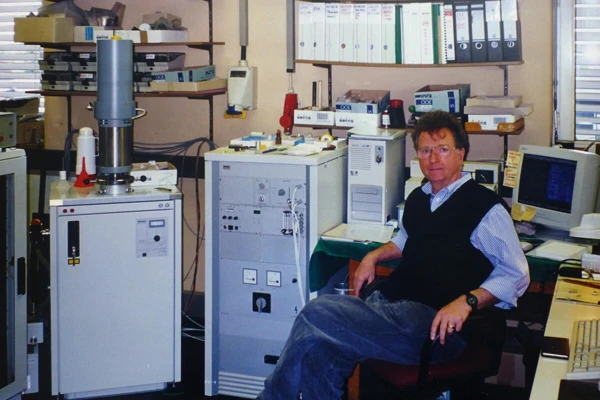
LFA in Nuclear Research
Laser Flash Apparatuses were and still are employed in areas such as nuclear research, since here especially, knowledge about the thermal properties of materials used is an essential safety factor.
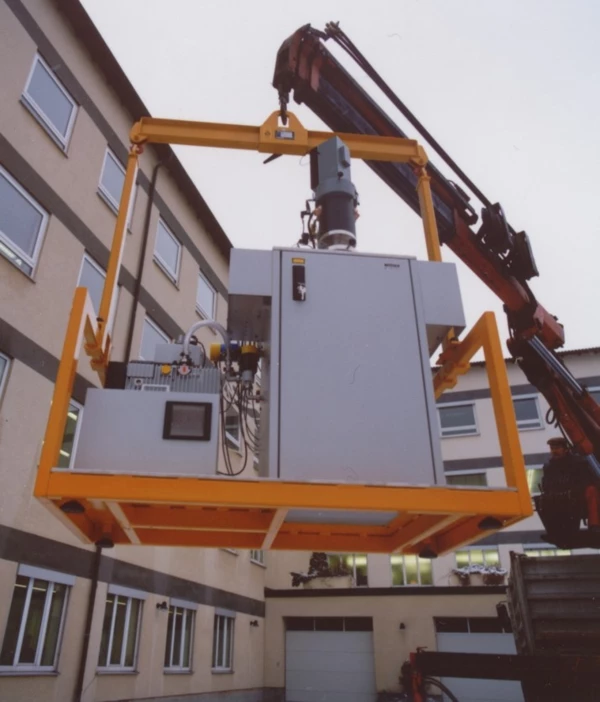
LFA users’ meetings
In the years 1995, 1997 and 1999, the first LFA users’ meetings took place; here, field experts met up with NETZSCH experts in order to discuss application examples and the latest developments, as well as to become familiar with new accessories. These users’ meetings were led by our laboratory director at the time, Dr. Jack Henderson.
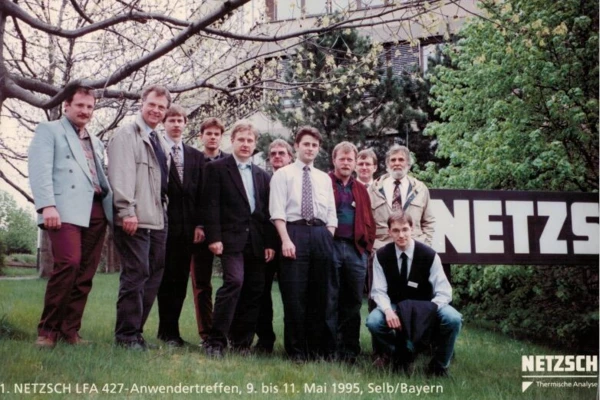
Next week, you will learn about the development of the low-temperature laser flash apparatus, the new products NanoFlash and MicroFlash®® as well as the first LFA with Xenon Light Source to 1250°C. Stay tuned!